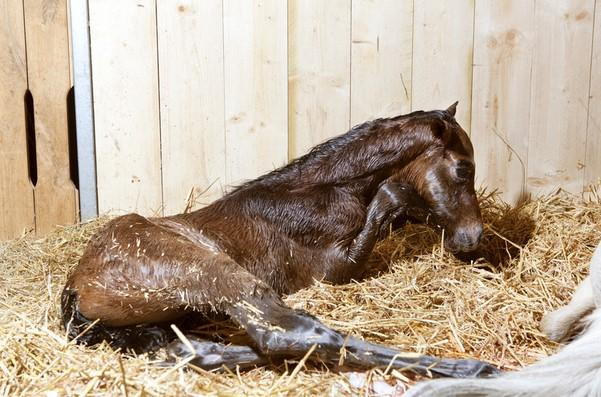Common Signs of Foal Rejection
- posted: Apr. 01, 2022
 Foal rejection can be very heart breaking, especially after spending 11 months of working closely with your veterinarian and providing proper care and nutrition to the mare. Most often foal rejection is seen in first time (maiden) mares. Some of the most common signs of foal rejections are not allowing foal to nurse, avoidance, and aggression. Often, these signs of rejection can be corrected with some time and patience.
Foal rejection can be very heart breaking, especially after spending 11 months of working closely with your veterinarian and providing proper care and nutrition to the mare. Most often foal rejection is seen in first time (maiden) mares. Some of the most common signs of foal rejections are not allowing foal to nurse, avoidance, and aggression. Often, these signs of rejection can be corrected with some time and patience.
Not allowing the foal to nurse can often be related to nervousness, fear, anxiety, or discomfort. First-time mares become very uncomfortable in their udder when a foal tries to nurse, simply restraining the mare to allow the foal to nurse can help relieve some of the pressure off the udder which can help the mare to become more comfortable.
Avoidance can simply be due to the mare being fearful of the foal. Again, this is more common to see in maiden mares as they are not used to having a foal by their side. If the mare is afraid of the foal, restrain the mare and slowly allow the foal to approach the mare’s side.
Finally, the most serious type of rejection is aggression. This is when the mare tries to physically harm her foal and may need to be placed in a location where she cannot kick or bite the foal. If the mare allows the foal to nurse, reward with some food or treats so they will associate the foal nursing with positive outcomes. However, if simple restraint and rewards do not work there are other forms of restraint or sedation that may need to be given.
If you are concerned in any way about your mare and new foal, please give call to consult with a veterinarian. Your veterinarian can assist with restraint techniques, sedation as well as hormonal therapy designed to make the mare accept her foal. Happy Foaling Season!
Location
Find us on the map
Browns Summit Location
5373 NC Hwy 150
Browns Summit, NC 27214, United States

